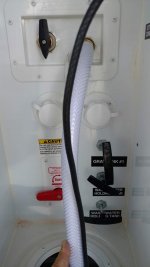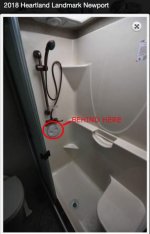Our camper has a bath and a half also two separate black water tanks.
There appears to be what I believe is to connections for black tank wash outs one for each tank.
When I connect a hose to one of them water squirts out of the other one and does not go to the black tank.
Suggestions anyone..
Thanks
see photo
There appears to be what I believe is to connections for black tank wash outs one for each tank.
When I connect a hose to one of them water squirts out of the other one and does not go to the black tank.
Suggestions anyone..
Thanks
see photo
Attachments
Last edited by a moderator:


